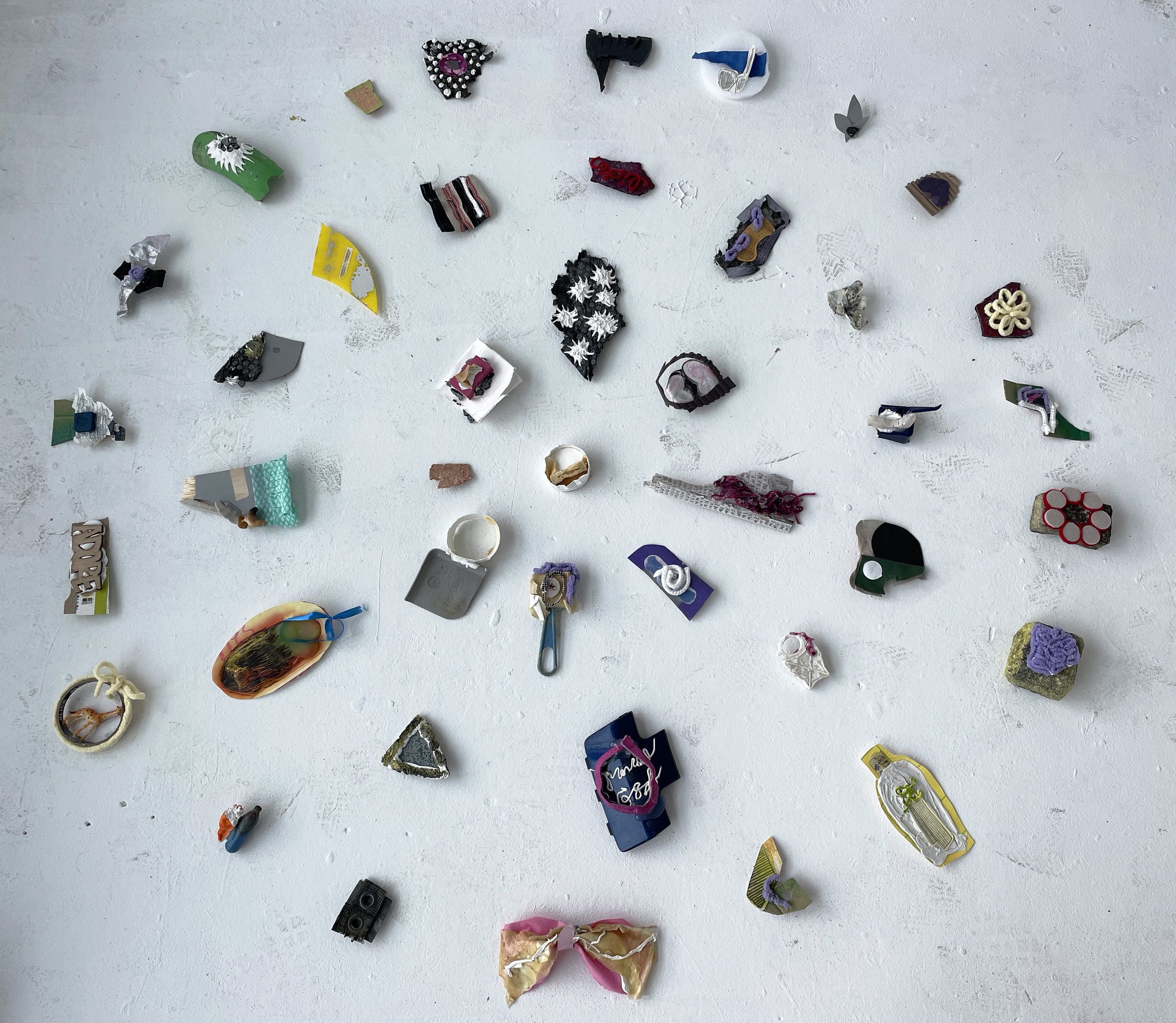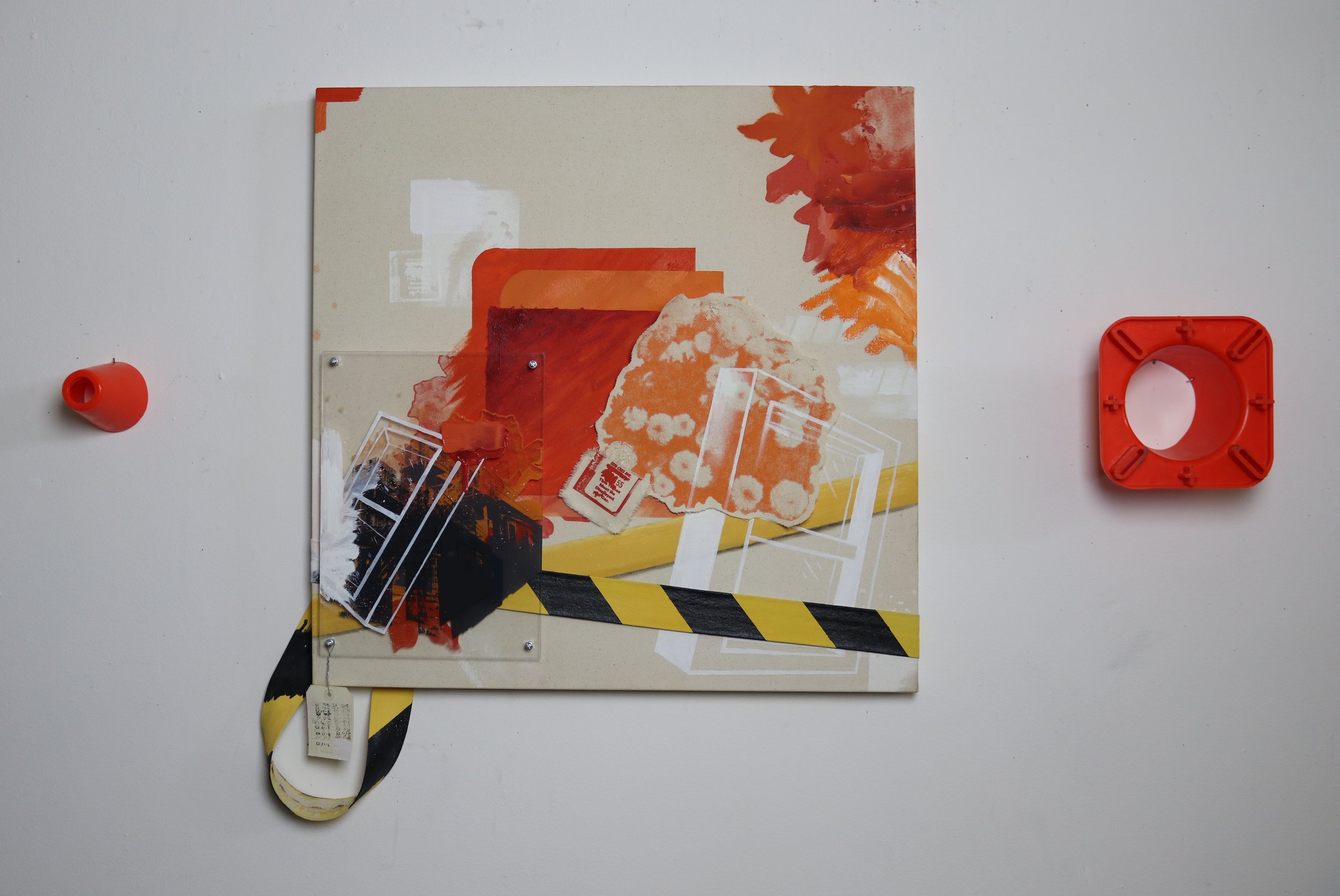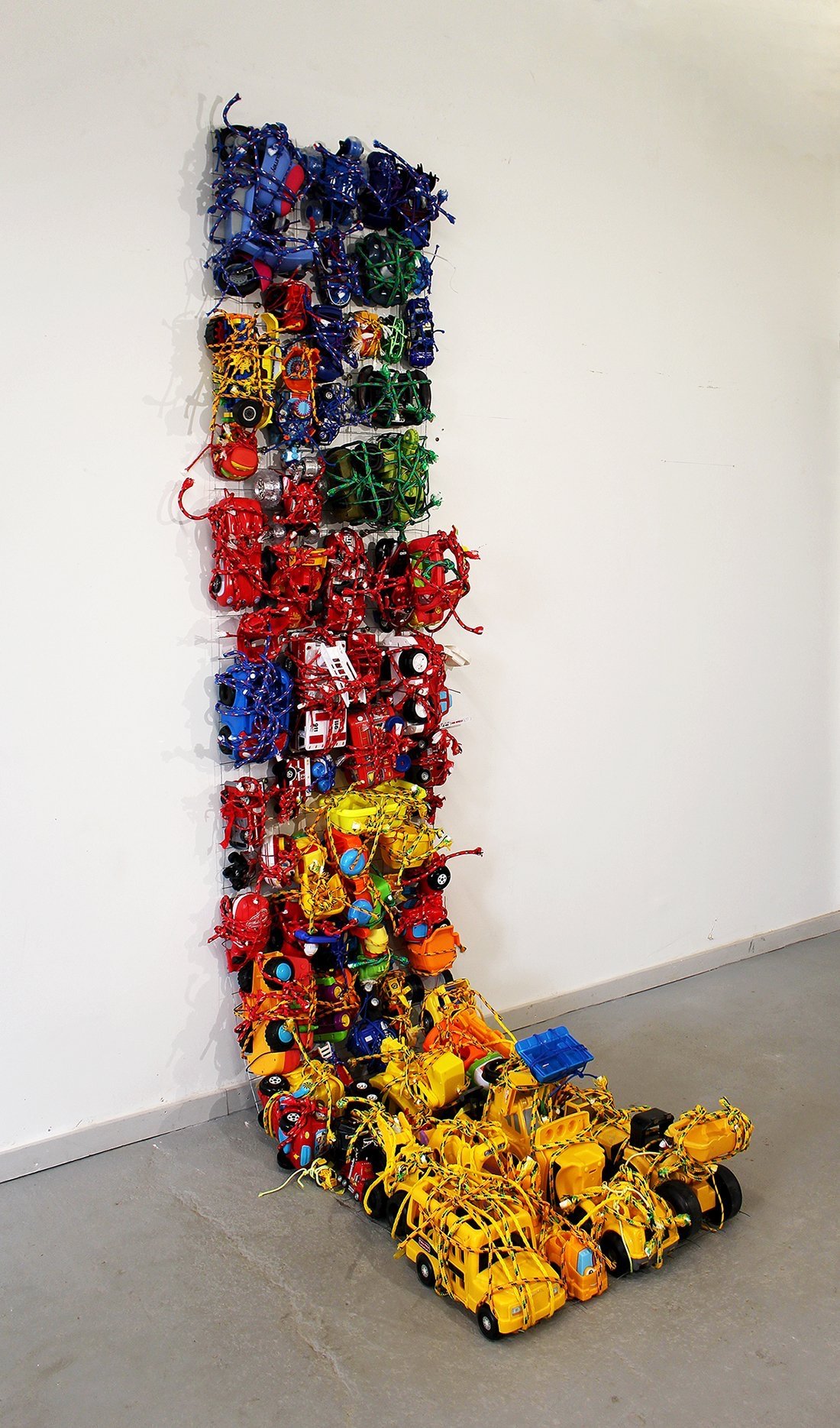ROY presents Eric Tuck-Macalla | Sara Hess | Grant Brownlow | Jeff Schofield
ROY asks
What is your name and what pronouns do you use?
Eric Tuck-Macalla he/him
How has art changed you?
I don’t remember me before I was making art, but Art School was a shock. I was a former fighter and a tradesman living in Ft. Lauderdale when I came to Cleveland Institute of Art, I had been out of High School for a few years and really felt out of place. In my third year at CIA I had a creative drawing class with Moe Brooker and I felt I had a connection with him. He showed me how to let go of the preciousness of my work and to use my story, he kind of drove that home. That flipped a switch in me and took the anxiety out of making art. I was able to push boundaries in my work, and in my life afterwards.
How did you begin your art practice?
My father was an Illustrator, art was just in my home all the time. I made art without ever really thinking “I’m an artist” or this is what I’m going to do with my life. I went to art school so I could set aside time to make art, and I had a good five years to follow my passion without expectations. Since graduation from CIA, I’ve pursued sculpture as a career, then stopped, for years I felt I had nothing to say. I started again when I did, and about 10 years ago I got back at it purely for myself, experimenting. Slowly I could find some direction and began showing this body of work in 2022.
When a first-time viewer sees your work, what is the first word that you hope they think of when looking at it?
As mundane as it is, I want you to think “interesting”, walk away, then come back and spend more time. For me a successful work of art will hold my attention for more than 60 seconds and make me want to come back and look again, that’s what I’m looking for, a personal connection with the work.
ROY asks
What is your name and what pronouns do you use?
Sara Hess, she/her
How has art (whether it be your own or art in general) changed you?
Art-making allows me to constantly learn, relearn, unlearn, listen, and pay attention.
How did you start your artistic practice?
Arranging and building Lego and Polly Pocket worlds as a kid.
ROY asks
What is your name and what pronouns do you use?
Grant M Brownlow, He/Him
How has art (whether it be your own or art in general) changed you?
Art has given me a new way to understand myself and the world in addition to an incredible community to surround myself with.
How did you start your artistic practice?
My artistic practice, at least in its current state, took form during my years in undergrad after an intro drawing class I took under the brilliant painter, Michael Dixon. I began taking my drawing and printmaking practice more seriously during my final year and after graduating in 2019. After school, I moved to Detroit, working in various printshops and any studios they would let me use their presses. Another mentor, Mary Rousseaux , allowed me to use her space during 2020 and pushed me to get into larger scale painting, which I did and loved. Shortly after, I came to Purdue to pursue my MFA which often straddles the painting and printmaking disciplines.
When a first-time viewer sees your work, what is the first word that you hope they think of when looking at it?
Deteriorate – I want people to think about repeated elements and the passing of these elements through time as distorting elements in the work. These shifting and changing images or influences upon the work passing on endlessly to destruction.
ROY asks
What is your name and preferred pronouns?
Jeff Schofield, he him his
How has art (whether it be your own or art in general) changed you?
I grew up in an artistic family, surrounded by music, drawing, and painting. My parents regularly took our family to museums, concerts, and other cultural events. We travelled all over the world, and I became fascinated with different cultural expressions of art, architecture, and design. So it was almost inevitable that I pursued a career as an architect and later as a visual artist.
How did you start your artistic practice?
I transitioned from practicing as a sustainable architect to creating environmental artworks. I started by re-using construction materials salvaged from building sites, such as wires, nails, ropes and metal grills. I wove them into collage paintings with the colors of concrete and rust to convey the dust, noise, and energy of a construction site. These evolved into found-object sculptures and large-scale installations that maintain an architectonic approach, involving repetition, assembly, and rhythm.
When a first-time viewer sees your work, what is the first word that you hope they think when looking at it?
“Emotional”. A successful artwork elicits emotions; sadness, joy, surprise, melancholy, tenderness, wonder, etc.




